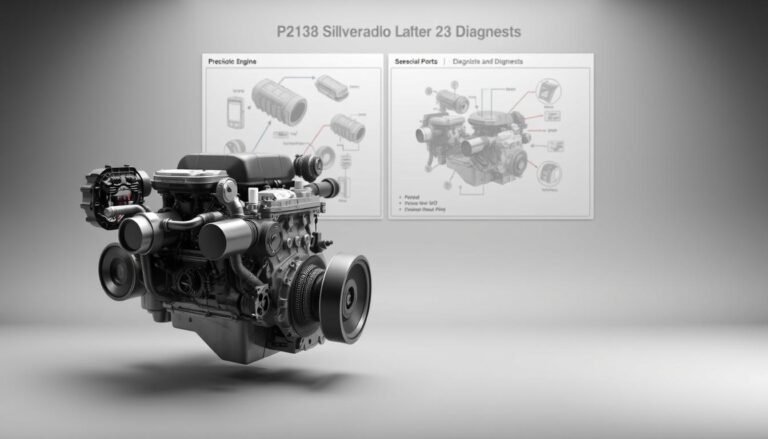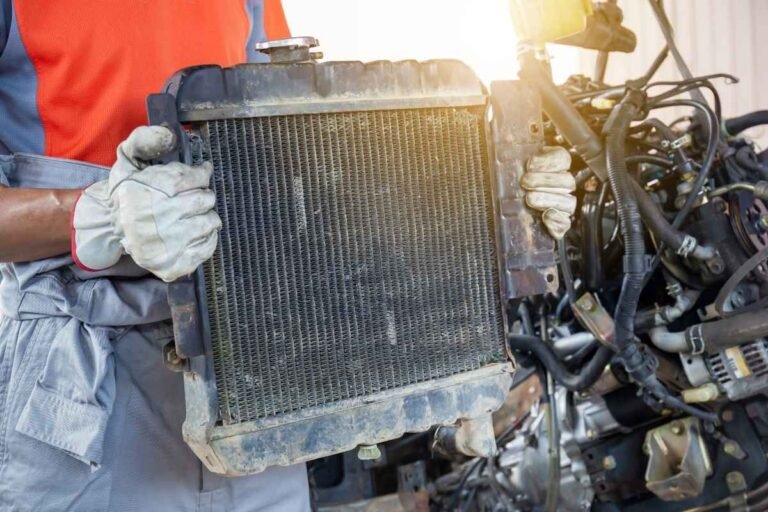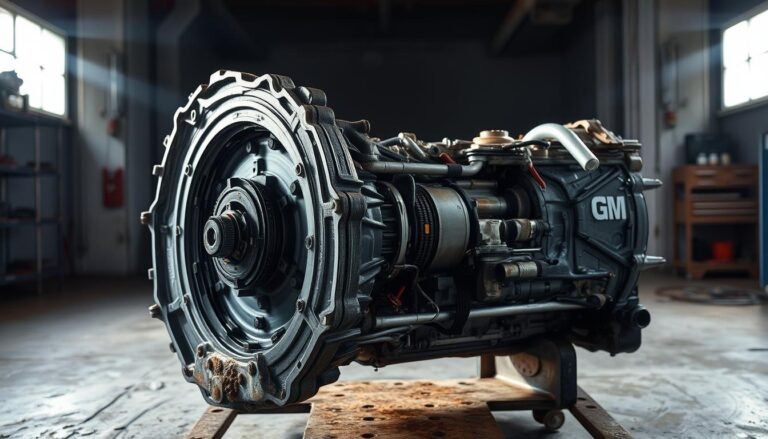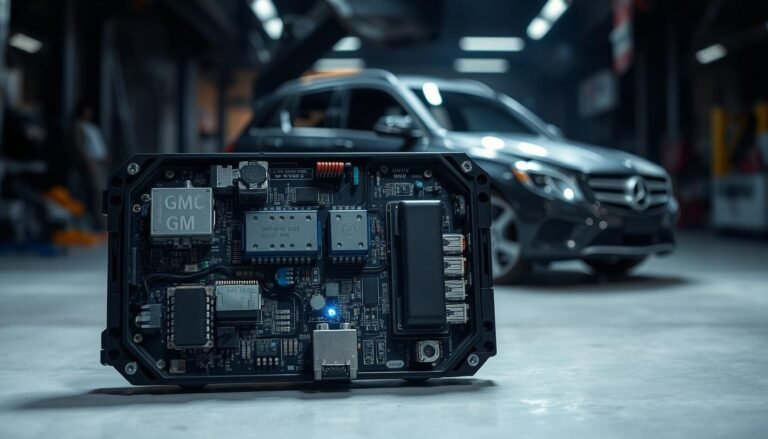GM 3.4l V6 Engine Problems
The GM 3.4l V6 Engine Problems have been a topic of extensive discussion among mechanics and car owners. From the early days of its production, this engine has shown remarkable potential. Yet, it also presents unique mechanical challenges.
Drivers have reported varied experiences with this engine. Some have enjoyed smooth performance, while others face significant maintenance concerns. Some vehicles equipped with the 3.4L V6 have reached impressive milestones like 61,000 miles with minimal issues. Others encounter substantial repair needs around 148,000 miles.
Understanding the potential complications is crucial for current and prospective owners. This comprehensive guide will explore the intricacies of the GM 3.4l V6 Engine Problems. It will offer insights into its performance, common issues, and maintenance strategies.
GM 3.4L V6 Engine History and Specifications
The GM 3.4L V6 engine marked a big step in General Motors’ engine development. It was introduced in 1996 and became a key engine in many GM cars until 2005. It was an upgrade from the 2.8-liter OHV engine, offering more power and refinement for mid-size vehicles.
Engine Design Features
The GM 3.4L V6 had some unique design features:
- Cast iron block with aluminum DOHC cylinder heads
- 60-degree V6 configuration
- Compression ratio of 9.5:1
- Displacement of 3.4 liters (207 cubic inches)
Production Years and Vehicle Applications
The 3.4L V6 was used in a variety of GM vehicles, including:
- Chevrolet Lumina
- Pontiac Grand Prix
- Oldsmobile Intrigue
- Chevrolet Impala
Performance Specifications
The engine had good performance for its time:
- Horsepower: 160 hp at 4,400 RPM
- Torque: 190 lb-ft at 3,200 RPM
- Fuel Economy: 18-22 MPG city, 25-30 MPG highway
Knowing about the GM 3.4l V6 engine’s history helps owners understand its good points and possible issues.
Understanding Common GM 3.4l V6 Engine Problems
Car owners with the GM 3.4l V6 engine should know about common issues. These problems can affect how well the engine works and how long it lasts. They are found in many Chevrolet and Pontiac cars made from 2005 to 2009.
The main GM 3.4l V6 engine problems fall into a few key areas:
- Lower Intake Manifold Gasket Failures: A common problem that can lead to coolant leaks
- Issues with the 4T65E transmission system
- Problems with the fuel system and injectors
- Weaknesses in the cooling system
Car owners should watch for signs of engine trouble. Look out for strange noises, poor fuel efficiency, rough idling, and sudden drops in performance. Catching these signs early can save you from expensive repairs later.
The engine’s design, while advanced for its time, has some weak spots. These include the unique block made in Shanghai, China, and certain design choices. These can lead to frequent mechanical issues.
Knowing about these common problems is the first step to keeping your car in good shape and avoiding sudden breakdowns.
Using diagnostic tools and regular maintenance can help avoid big engine problems. This way, car owners can keep their vehicles running smoothly and reliably.
Lower Intake Manifold Gasket Failures
The GM 3.4l V6 engine is known for its issues with lower intake manifold gaskets. These parts often fail, causing big problems for car owners. It’s important to know the signs, repair costs, and how to prevent these issues to keep the engine running well.
Symptoms of Gasket Failure
Spotting problems early can help avoid expensive fixes. Look out for these signs:
- White foam inside the oil filler cap
- Gradual loss of antifreeze coolant
- Inconsistent cooling system performance
- Slow coolant loss without detectable external leaks
- Potential sludge buildup in the overflow tank
Repair Costs and Solutions
Fixing a failed lower intake manifold gasket can cost between $350 and $500 at a mechanic’s shop. Fel-Pro has a special gasket (Part # MS98003T) to fix the design flaws. Owners of 3.4l V6 engines, especially those with over 146,000 miles, should watch out closely.
Prevention Measures
Regular maintenance can prevent many GM 3.4l V6 engine issues:
- Use a digital torque wrench with precise inch-pound measurements
- Consider replacing the thermostat during gasket replacement
- Thoroughly clean gasket surfaces before reassembly
- Use metal-framed gaskets when possible
- Regularly inspect cooling system components
Vehicle owners should note that improper installation can lead to undetected damage, potentially resulting in more extensive engine repairs.
Transmission Issues with the 4T65E
The 4T65E transmission is a key part in many GM 3.4l V6 engine cars. It was first made in the early 1990s. It became a standard in many GM models, like Chevrolet Impalas and other V6 cars.
Car owners with GM 3.4l V6 Engine Problems often face transmission issues. These problems usually start between 87,000 to 110,000 miles. Common signs include:
- Unexpected gear slipping
- Delayed engagement when shifting
- Rough transitions between gears
- Unusual transmission noises
Diagnostic insights show that the condition of the transmission fluid is very important. Keeping the fluid clean and changing it regularly can help the transmission last longer. Mechanics suggest changing the fluid every 50,000 miles to avoid problems.
The heavy-duty version of the 4T65E can handle engines with up to 440 Nm of torque. This makes it quite strong. Cars from GM brands like Chevrolet, Buick, and Pontiac used this transmission from 1993 to 2011.
Proactive maintenance is key to preventing costly transmission repairs in GM 3.4l V6 engine vehicles.
Car owners should look out for early signs of trouble. Fixing small issues early can save a lot of money on bigger repairs later.
Fuel System Complications and Injector Problems
The GM 3.4l V6 engine faces fuel system issues that affect its performance. Fuel injector problems are common in older models. These issues can make the engine less efficient and unreliable.
Fuel system problems in the GM 3.4l V6 engine show up in different ways. Vehicle owners need to know these signs:
- Reduced fuel economy
- Rough engine idling
- Unexpected engine misfires
- Difficulty starting the vehicle
Diagnostic Signs of Fuel Injector Issues
Spotting fuel system problems early can avoid bigger engine damage. Look out for these specific trouble codes:
- P0171: System Too Lean (Bank 1)
- P0174: System Too Lean (Bank 2)
- P0300: Random/Multiple Cylinder Misfire Detected
Maintenance Requirements
Regular maintenance is key to avoiding fuel system issues in the GM 3.4l V6 engine. Cleaning the fuel system and using quality fuel can help. This reduces the chance of clogged injectors and performance problems.
Here are some maintenance tips:
- Use top-tier gasoline
- Do fuel injector cleaning regularly
- Change fuel filters as recommended
- Run system diagnostics often
Knowing about fuel system problems and doing regular maintenance helps. GM 3.4l V6 engine owners can keep their vehicle running well for longer.
Cooling System Vulnerabilities
The GM 3.4l V6 Engine Problems often show up through cooling system issues. These problems can hurt how well the vehicle runs and how long it lasts. Coolant leaks are a big problem, with 90% of issues being easy to spot by looking for dripping or seeping.
People with GM 3.4l V6 engines need to know about some big cooling system problems:
- Engine overheating is a sign of cooling system failures
- Potential intake manifold gasket wear from 50,000 to 80,000 miles
- Internal coolant leaks can damage engine parts
Diagnostic insights show that cooling system pressure is key. Most systems work best between 8 to 14 psi. Pressure tests are important for finding leaks. A good radiator pressure test keeps pressure steady for 10 to 15 minutes.
Keeping the coolant mix at 50/50 antifreeze and water is vital. It helps avoid cooling system failures and protects against damage.
Big failure points in the GM 3.4l V6 Engine cooling system include:
- Head gasket failures from overheating
- Radiator and transmission fluid cooler issues
- Thermostat and electric cooling fan problems
Regular maintenance can lower the risk of cooling system failures. Check the engine often, use the right coolant, and fix problems early. This helps keep the engine running well and avoids expensive fixes.
Engine Performance and Reliability Factors
The GM 3.4l V6 engine has both good and bad points. It’s important to look closely at its performance and reliability. If you want a reliable engine, you’ll find both benefits and drawbacks with this design.
- Power output ranges between 170-185 horsepower
- Peak torque around 220 lb-ft
- Engine redline approximately 6,500 RPM
Power Output Concerns
The engine’s power might not meet expectations for quick acceleration. Some GM 3.4l V6 engine models have moderate performance. This might be a letdown for those who love fast cars.
Longevity Expectations
Despite some issues, many GM 3.4l V6 engines last a long time. Proper maintenance can extend engine life significantly. Some engines even reach 180,000 miles.
Key factors for longevity include:
- Consistent oil changes
- Regular maintenance schedules
- Avoiding extreme driving conditions
- Addressing minor issues promptly
Proactive maintenance is the cornerstone of extending your GM 3.4l V6 engine’s operational lifespan.
Expert Tips for Buying a Vehicle with the 3.4L V6
When looking at a car with the GM 3.4l V6 Engine Problems, it’s important to be well-prepared. Start by doing thorough research on the used car with this engine. A detailed pre-purchase inspection is key to spotting any mechanical issues.
Looking at the service records is essential. They show if the car has been well-maintained. Check for records of oil changes, coolant replacements, and timing chain upkeep. For cars with the GM 3.4l V6 Engine Problems, watch out for signs of worn-out lower intake manifold gaskets, bad transmission fluid, and coolant leaks.
It’s wise to have a professional mechanic do a diagnostic scan. The 3.4L V6 has issues with fuel injectors, transmission parts, and cooling systems. Set aside money for repairs that might be needed after buying the car.
Finally, different cars of the same model year were compared to see their maintenance records. Some 3.4L V6 engines work better than others. Don’t rush into a decision. Get a detailed vehicle history report, check for recalls, and have a mechanic inspect the car before you buy it.
FAQs
What vehicles typically use the GM 3.4L V6 engine?
The GM 3.4L V6 engine was used in many General Motors vehicles. This includes the Chevrolet Venture, Pontiac Montana, and Oldsmobile Silhouette. It was also found in other minivans and mid-size vehicles from the late 1990s to early 2000s.
What is the most common problem with the GM 3.4L V6 engine?
The most common issue is the failure of the lower intake manifold gasket. This can lead to coolant leaks, engine overheating, and damage if not fixed quickly.
How much does it typically cost to repair the intake manifold gasket?
Repairing the intake manifold gasket can cost between 0 and 0. This depends on whether you do it yourself or hire a professional. Professionals charge more because the job is more complex.
What are the signs of transmission problems in vehicles with the 4T65E transmission?
Signs of transmission trouble include gear slipping, delayed engagement, and unusual shifting. You might also see transmission fluid leaks. These signs often mean the transmission is wearing out.
How can I prevent fuel system issues in the GM 3.4L V6 engine?
To avoid fuel system problems, keep up with regular maintenance. Use high-quality fuel and clean the fuel system periodically. Replace fuel filters as needed and fix any performance issues early to prevent bigger problems.
Are cooling system problems common in this engine?
Yes, cooling system issues are common, especially with intake manifold gasket failures. Look out for frequent coolant loss, engine overheating, or visible leaks.
What is the typical lifespan of a GM 3.4L V6 engine?
With good maintenance, these engines can last 150,000 to 200,000 miles. But, the actual lifespan depends on how well you maintain it, your driving habits, and how quickly you fix problems.
What should I check before buying a vehicle with this engine?
Before buying, check the service history and look for signs of leaks. Inspect the intake manifold gasket and the transmission. Have a mechanic do a full inspection too.
How do fuel injector problems affect engine performance?
Faulty fuel injectors can cause rough idling, poor fuel economy, and engine misfires. They can also reduce power and lead to more serious engine problems if not fixed.
Can I perform maintenance on this engine myself?
You can do some maintenance yourself, like changing spark plugs and air filters. But, replacing the intake manifold gasket is best left to a professional.









